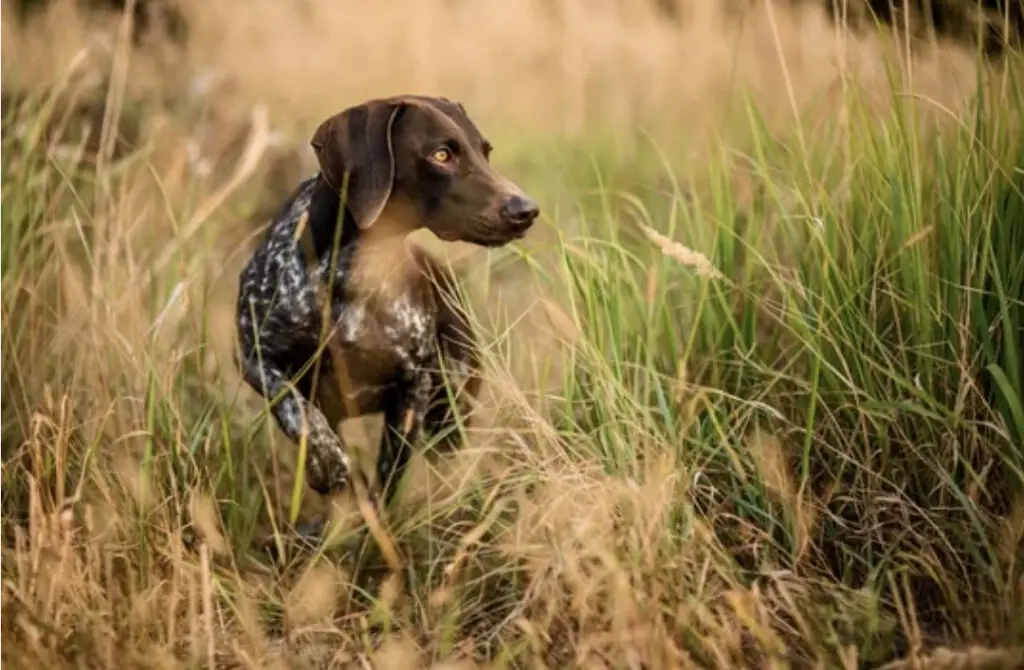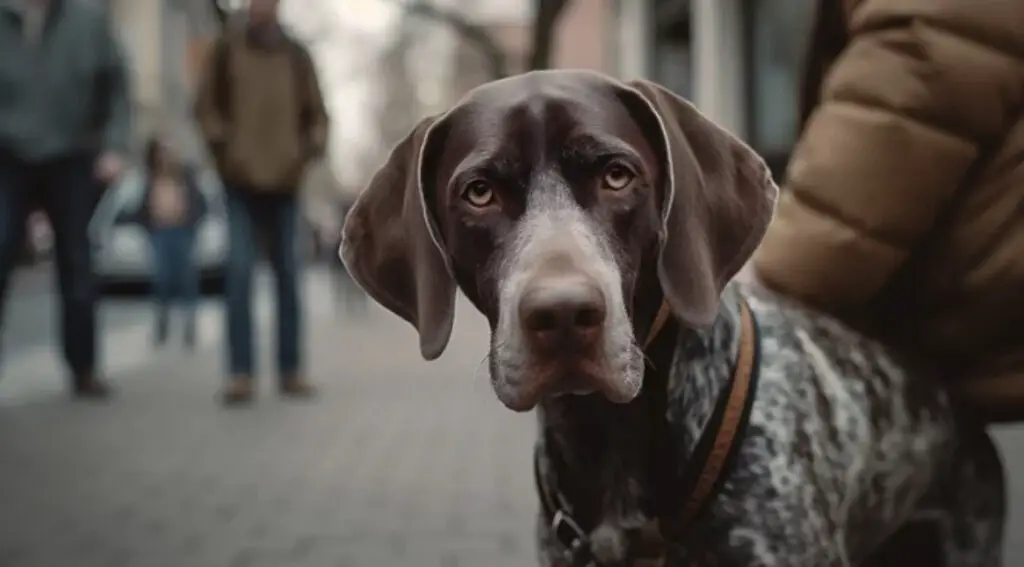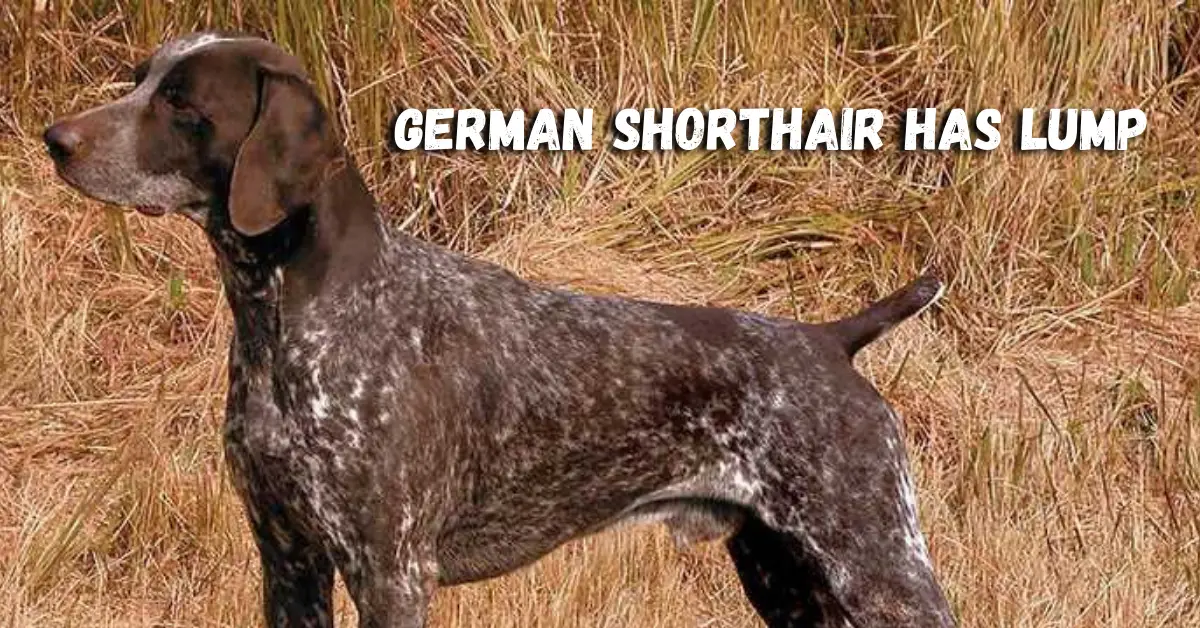As a proud German Shorthair parent, your top priority is keeping your pooch healthy and safe. Unfortunately, sometimes you may notice a lump on your dog which can cause you to panic. But don’t worry!
With the right care and attention, your German Shorthair can continue to be the energetic and loving companion that he is.
In this article, we will discuss everything about lumps in German Shorthairs, along with telling you how to identify the symptoms to their preventive measures.
Overview of Lumps in Dogs

Dogs are likely to develop lumps at some point in their life. Even if you spend most of your time with your dog, it is possible that you won’t notice his bump right away. Although not all lumps are dangerous, it is still crucial to take your dog to the vet to be on the safer side.
When Can Lumps Develop?
A dog may develop a lump at any age, yet, older dogs have a higher risk because of their potential skin problems. While the lumps are more common in aging dogs, this appears at any age in a dog’s life.
Common Causes
- Swelling from an insect bite
- Accumulation of pus produced by bacteria
- Cancerous tumor
- Diet
- Allergic reactions like rashes
- Stress
- Hormonal imbalance
- Scar tissue as a vaccine reaction
- Cuterebra or warble fly
- Formation of internal cysts & fluids in body
Other Symptoms of Illness
If your dog exhibits additional symptoms other than the lump, it may be a sign of an internal illness like cancer. Look out for symptoms like:
- Diarrhea
- Loss of appetite
- Vomiting
- Constant thirst
- Frequent urination
Types of Lumps in German Shorthairs
Lumps in a German Shorthair can be divided into two main categories- Tumors (cancerous and non-cancerous) and skin-related lumps.
Benign Lumps (Non-cancerous)
A Benign mass is an abnormal growth of cells that is non-cancerous and is not usually life-threatening. It does not really require medical help unless it affects your dog’s behavior. These lumps are caused by different cell types and can occur anywhere on the body as little bumps. Common types include:
- Lipomas
- Sebaceous adenomas of the skin
- Basal cell tumor
- Melanoma
- Sweat gland tumor
Identifying a Benign Lump
The signs of non-cancerous lumps in dogs may vary, depending on their size and location. Some of these signs are-
- Hairless lump which looks like a button
- Difficulty in walking or moving around
- The lump growing bigger in size
- Breathing problems
- Seizure or loss of control
Malignant Lumps(Cancerous)
Malignant tumors are cancerous tumors that can be quite dangerous if left untreated. They commonly occur in the skin, digestive system, and breast in female dogs. Cancer tumors can create hard, immovable lumps, but they may be harder to spot because of a dog’s coat. Common types include:
- Mast Cell tumor (most common)
- Fibrosarcoma
- Squamous Cell Carcinoma
- Mammary Carcinoma
- Osteosarcoma – Bone cancer
How to Identify a Malignant Lump
Some of the common symptoms of cancerous tumors are-
- Lumps appearing suddenly
- Big lumps
- Discharge from eyes, nose, or the lump
- Slow healing of wounds
- Change in color or texture
- Weakness and laziness
- Substantial loss in weight
Other Infectious Lumps

An infectious lump, also called skin growth, is a mass of tissue that sticks out from the skin around it. Your dog may develop an infectious lump due to a number of diseases, such as bacteria, viruses, fungi, or parasites. Some of these include:
- Abscesses
- Cysts
- Warts
- Hematomas
- Hives
Watch Out For The Following Signs
- Red and swollen lumps
- Accumulation of pus
- Itchy patches on the skin
- Lump in areas exposed to pathogens
Carefully observe the lump of your dog and note down if you see any changes. These changes can be the lump changing color from black to purple color, bruising in the surrounding area, hardening texture, growth, discomfort, etc.
Veterinary Testing
If you notice a lump on your German Shorthair, it is important to get it tested by the vet immediately. The vet will thoroughly check the lump to see if it is infectious or not.
It is necessary to get it tested to ensure that it does not spread or rupture. It is vital to note that the growth of the lump may not always be apparent, which is the main reason for consulting an experienced veterinarian.
The vet will run one or more of the below tests:
- Fine Needle Aspiration (FNA)
It is a quick test to see what is inside the lump without involving any sedatives. The vet will insert a small needle into the lump to extract some cells and then examine it under a microscope. This test can identify around 95% of lumps.
- Impression Smear
In this test, the vet will take a sample of the fluid inside the lump. He will rub a slide onto the lump, stain it, and then examine it with the above test.
- Lab Test
If the lump has a fluid or pus around it, the vet will send it to the lab to look for infections like fungi or bacteria. This will give you a better understanding.
- Biopsy
If all the above tests fail, the vet might need to take a closer look at the situation. He will give your dog a sedative and remove a small piece of the lump for a deeper examination. After taking the necessary tests and getting the reports, the vet will offer treatments accordingly.
Treatment of Lumps in German Shorthaired Pointers
For Non-Cancerous Lumps
Most of the time, benign tumors don’t need treatment. By regular monitoring, you can make sure they don’t cause any problems. However, if the allergic symptoms continue, medical attention will be crucial.
The most common treatment option for benign tumors is removal surgery. The purpose of the surgery is to remove the lump without harming the tissues around it.
In some cases, medication may also work, but this can only be decided after tests.
For Cancerous Lumps
The options for cancerous tumor treatment include chemotherapy, radiation therapy, immunotherapy, and combination therapy.
Immunotherapy consists of cancer vaccines. In chemotherapy the dog may be given a pill or injection, depending on the therapy type. Lastly, radiation therapy needs anesthesia to ensure the precision and placement of the treatment.
It is essential to know that cancer treatments can have a few side effects on some dogs. These side effects include vomiting, diarrhea, reduced blood cells, degraded immunity system, etc.
After the operation, there are some post-treatment care techniques that you must keep in mind. Giving prescribed medications on time, a comfortable environment, hydration, and proper care, can be highly recommended.
Preventing Your German Shorthair From Having Lumps
- Make sure you give nutritious foods to your dog, which are rich in vitamin B-complex, C, D and E
- Shorthairs are quite energetic, and need regular exercise. Make sure you take our dog out on walks daily and avoid a sedentary lifestyle
- Avoid exposure to toxins and excessive sunlight
- Maintain good hygiene
- Get routine check-ups
Conclusion
Remember that early detection is the key to curing lumps in your German Shorthair. While not all lumps are life-threatening, it is always best to take your dog to the vet for safe measures. Be your dog’s watchful guardian and give him the care to keep him healthy for a long time.
Thanks for reading.


